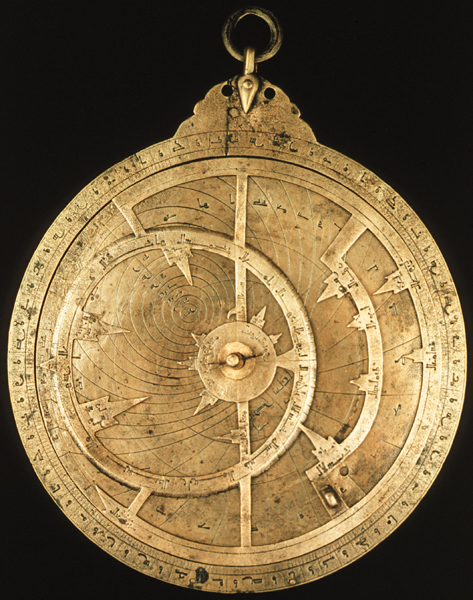Image Details

The al-Sabah Collection, Kuwait National Museum
Since Muslims face the holy city of Mecca when they pray, Arab astronomers sought to build precise scientific instruments to determine direction and time of day (or night). With the bronze astrolabe shown above, cast in 927 C.E., one could reckon time and place by fixing the apparent positions of celestial bodies against the local horizon. The tenth-century Arab scholar and bookseller Abu ’l-Faraj Muhammad ibn Ishaq al-Nadim, better known simply as al-Nadim, gives a prominent place to astronomical learning in his great encyclopedia of knowledge, the Fihrist—which not only provides an account of the accomplishments of medieval Arab civilization but also shows how Arab scholars preserved and improved upon their predecessors. For example, al-Nadim tells us that the first person to make astrolabes was the Greek astronomer Ptolemy (90‒168 C.E.), who lived in Roman-period Alexandria. So useful was Ptolemy’s invention that by al-Nadim’s day most educated Muslims owned one.
